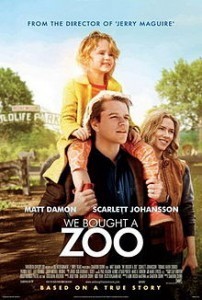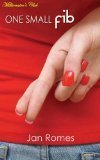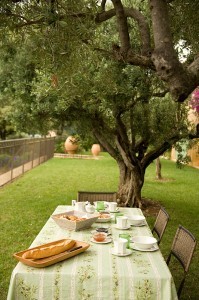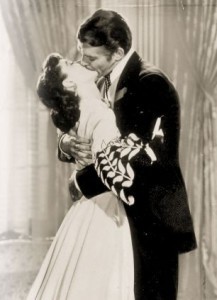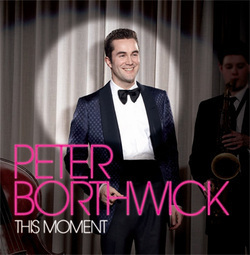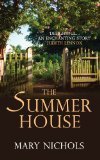Hannah Fielding's Blog, page 144
October 30, 2012
A quaint Kentish street
 Middle Street, a street lined with quaint cottages in the conservation area of Deal, which used to be the haunt of smugglers.
Middle Street, a street lined with quaint cottages in the conservation area of Deal, which used to be the haunt of smugglers.
October 29, 2012
Top tips for autumnal fruit crumbles
Autumn is here! The leaves on the trees in my garden in Kent are a riot of colours, from burnished orange to saffron yellow to ruby red to aubergine red. The air has a distinct chill, and the mornings and evening grow darker by the day. As one begins to hear the delicate tap tap tap of winter’s icy fingers, the body begins to grave food of the most filling and comforting variety. And for me, crumble – that traditional British classic – comes high on the list.
What I love about crumble is its versatility. You can use an abundance of different types of fruit, from blackberry to apple, peach to cherry, rhubarb to pear, plum to strawberry. You can opt for a light, crunchy crumble, or a denser, more filling topping, perhaps with a touch of lemon or cinnamon for flavour. Once cooked, the dessert is delicious with cream or ice cream or custard – or mashed down, it is an excellent ingredient in ice cream itself.
So many different recipes for crumble are available, the choice is bewildering. I think each cook comes up with his or her preferred method and recipe for the top, and can then experiment happily with the fruit filling. Here are some tips to make sure your crumble turns out delicious and heart-warming (and not stodgy):
Use fresh fruits, not canned. For apple crumble, use Bramley apples and sprinkle on sugar.
Use only the best ingredients – and make sure the butter is unsalted.
Add some porridge oats to the crumble for a good texture – I like to sprinkle them over the top so they don’t soak up too much moisture.
Don’t limit yourself to white caser sugar – light brown sugar gives a lovely flavour; and if you like your crumble mixture gritty, try a little demerara.
Rub the butter in by hand, rather than using a food processor. Doing so helps achieve a crumbly consistency, rather than too-fine grains. Plus, I always think rubbing together butter and a flour mixture is much of the fun of cooking – therapeutic.
Try a broken up Weetabix on top or gingernut biscuits; they add a lovely crunch.
Pop in the oven on a low heat, and remove when the topping is cooked through – brown on top with juices from the fruit bubbling up. Allow to rest for a couple of minutes and then serve. I like making crumbles in individual ramekins, and if you do so you’ll find it’s easy to make extra – crumble is one of the best puddings for freezing. Enjoy!
October 27, 2012
Favourite film: We Bought a Zoo
If you’re looking for a heart-warming, moving, feel-good and inspirational film, this is one for you.
I first became aware of the film having read the book on which it is based – We Bought a Zoo by Benjamin Mee. (I much prefer to have read the book before seeing the film adaptation, so I am pleased it worked this way round.) I found the book fascinating, and immensely touching. Here is the blurb:
An amazing true story that has inspired the major Hollywood motion picture this Christmas, to be repackaged for release alongside the film. We Bought a Zoo is about one young family, a broken down zoo, and the wild animals that changed their lives forever. When Ben [played by Damon] and his wife Katherine [played by Johansson] sold their small flat in Primrose Hill, upped sticks with their children and invested their savings into a dilapidated zoo on the edge of Dartmoor, they were prepared for a challenge and a momentous change in all their lives. With over 200 exotic animals to care for – including an African lion, a wolf pack, a Brazilian tapir and a jaguar – Ben’s hands, and those of his wife, children and tiny team of keepers, were full.
What they weren’t prepared for was Katherine’s devastating second brain cancer diagnosis. Ben found himself juggling the daunting responsibilities of managing the park’s staff and finances, while holding the bailiffs at bay and caring for his wife.
A moving and entertaining story of courage and a family’s attempts to rebuild a zoo, and carry on after Katherine’s tragic death.
I so admire the family’s courage and spirit in rescuing this zoo, and when I visited the zoo myself, I found it to be a wonderfully warm and friendly place, tucked away down winding lanes amid woods, where you can get really close to some beautiful creatures.
The film adaptation of the book is Americanised – with Matt Damon and Scarlett Johansson in the starring roles, and Dartmoor Zoological Park becoming ‘Rosemoor Wildlife Park’ set in California. But the heart of the story remains in essence the same, at once stirring and uplifting and inspirational, and also the kind of movie that requires a box of tissues within reach.
For me, the animals are the highlight of the movie. When I wrote Burning Embers, I so enjoyed thinking back to my time in Kenya and weaving a tale with the backdrop of the wonderful creatures that are native to that land. And in this film, I was drawn to the animals of the zoo, and the sense that they, along with the family, were the centre of the drama – the raison d’être of the piece.
I think what is most wonderful about this film is that it raises awareness of Dartmoor Zoological Park and its history, and in doing so hopefully encourages more people to visit and to support the Mee family and the animals they care for. What a wonderful testament to the hard work and bravery of a very special family.
October 25, 2012
Book review: One Small Fib by Jan Romes
From the blurb:
Allie Blue’s dream of buying the old Smithington mansion and turning it into a bed and breakfast is stomped by a mystery real estate developer with a fancy pen and loaded checkbook. With no bed and breakfast, Allie resorts to one small fib which lands her a flight attendant’s job and the task of pampering Upward Airlines’ most demanding frequent flyer – Kiptyn Thomas, III. Something raw and potent snaps between them, but Allie fights the attraction for the guy who thinks he’s at the top of the food chain. Kiptyn Thomas is used to getting what he wants, when he wants it. Allie Blue both annoys and intrigues him. Will some well-intentioned fibs, a deep dark secret, and similar personalities draw them together or keep them apart?
Witty, sassy, energetic, crackling with chemistry. A great romantic read. Pure escapism, and I rather liked the characterisation – prickly-but-needy millionaire meets feisty-but-needy air stewardess. The author is unafraid to explore cold realities of life, such as having a woman of the night for your mother, and saying the complete wrong thing and inadvertently ruining the mood while in a sensual moment.
My favourite element of the book was the author’s ability to mix poignancy and a wry, warm, funny tone. For example:
One rebel tear teetered on her bottom lid like it was waiting for her to turn her back so it could slide down her cheek. Allie brushed it away with her shirtsleeve. She was tougher than tears, tougher than the heartbreak of losing her dream. All she needed was a little rest and relaxation – plus a roll of duct tape to hold her heart together – and she’d be okay.
Plenty of emotion and layering to the story, and compelling chemistry. In all, a great weekend read, and I’ll be looking out for Jan’s other titles.
One Small Fib is available now from Amazon; click on the book cover below to visit the store.
October 24, 2012
Writer’s fuel
October 23, 2012
Giving characters the chance to grow
Romeo and Juliet were but teenagers when they fell in love, so cementing one of the best loved and most famous romances of all time. But can lasting love bloom without experience and knowledge?
In any novel, the protagonist grows. The entire point of the story is to take the character through experiences that are powerful and transformative. The character learns about him-/herself, and by the end of the novel, has a greater sense of self.
In a romance story, the experience that the character goes through is rooted in developing attraction and connection with a love interest. So, in Burning Embers Coral – a naive, inexperienced young lady – goes on a journey of self-discovery driven by her feelings for Rafe. She learns what is true and what is false. She learns that love is not black and white. She learns about forgiveness and acceptance and courage and sexuality.
Experience teaches Coral at the expense of her illusions, and by the end of the book she is a much wiser, more mature woman, no longer a rosebud but now a rose – blossomed and open to love.
As Aldous Huxley said, “Experience is not what happens to you. It is what you do with what happens to you.” The key to growth is how you deal with an experience.
In Rafe’s case in particular, experiences in love have been painful, leaving him closed and self-blaming. Coral is less experienced and consequently less damaged, but finding her fiancé in a compromising position with another woman has certainly hindered her trust and her faith in true love.
As I write my romance stories, pulling my characters through experience after experience in an effort to get them to learn and change and come together, I have in mind one key point: it is in a relationship that we grow. Though being with another person can be frustrating and hard work, and being alone can feel the less frightening, easier choice, it is through the experiences of being together – of learning to accept another, of being accepted, of being selfless, of being inspired, of being challenged at every turn – that we learn about ourselves. Like yin and yang, the two parts, added together, become cohesive – something powerful and strong and amazing.
October 22, 2012
Kiss me, honey honey, kiss me
The kiss. The very pinnacle of romance.
The word conjures music in my mind. The love theme to Baz Luhrmann’s Romeo and Juliet; Des’ree’s ‘Kissing You’. Faith Hill’s ‘This Kiss’. Nat King Cole’s ‘Moonlight Kisses’. Ella Fitzgerald’s ‘Prelude to a Kiss’. Sixpence None the Richer’s ‘Kiss Me’:
Kiss me beneath the milky twilight
Lead me out on the moonlit floor
Lift your open hand
Strike up the band, and make the fireflies dance
Silvermoon’s sparkling
So kiss me
Say ‘kiss’ to me and my imagination conjures up scenes from movies – romantic, climactic moments forever painted across the mind’s canvas. Burt Lancaster and Deborah Kerr on the beach in From Here to Eternity. Leonardo di Caprio and Kate Winslet on the deck of the doomed Titanic. Rachel McAdams and Ryan Gosling kissing in the rain in The Notebook. Really, I could continue indefinitely!
I have always loved the works of French writer Victor Hugo, and this quote stands out in my memory:
How did it happen that their lips came together? How does it happen that birds sing, that snow melts, that the rose unfolds, that the dawn whitens behind the stark shapes of trees on the quivering summit of the hill? A kiss, and all was said.
For me, the kiss is everything in a love story – whether on-screen, on a page or in the real world. When I start writing a romance novel, that first kiss looms before me with each word that I write. It’s a magical moment, and a turning point. It’s a pleasure to write; as I write a first kiss scene, I remember exactly why I’ve spent a lifetime dreaming of romance stories and writing them down.
For a romantic like me, it seems unthinkable that the world is not similarly swept up in the wonder of the kiss. But did Louis Armstrong have it right when he sang ‘A kiss is just a kiss’? For a recent survey reported on in The Telegraph found that 80 per cent of British couples do not share a goodnight kiss.
What the survey does not explore, of course, is whether these couples kiss at different times of the day instead (I do hope so). A kiss need not be part of a routine, but a spontaneous expression of love. ‘Each kiss a heart-quake,’ as Lord Byron wrote.
In ancient times people believed that the soul was carried on the breath, and thus a kiss was a connecting of souls. Percy Bysshe Shelley says it best: ‘Soul meets soul on lovers’ lips’.
October 20, 2012
An interview with jazz singer Peter Borthwick
Today I’m delighted to feature an interview with the wonderfully talented jazz singer, Peter Borthwick. I was one of the lucky few to attain a ticket for the launch of his new album, ‘This Moment’, and the performances were exquisite. I’ve been humming ‘Cuban Peter’ for weeks now…
This month, I’m giving away a copy of my novel Burning Embers and Peter’s CD ‘This Moment’ – entry details here.
For more details on Peter, visit http://www.peterborthwick.com/. ‘This Moment’ is available from both Amazon.com and Amazon.co.uk and on iTunes.
1. When did you first fall in love with jazz, and why?
I’d say it is a long and enduring love affair spanning most if not all of my life. My grandfather used to play jazz piano and I grew up listening to a lot of jazz. One of my elder brothers in particular loved jazz and so I enjoyed listening to his eclectic collection. Much of my musical tastes are a result of his mature discoveries. On the way to school in the car we would listen to Ella Fitzgerald sing the American Songbook so much so that I knew the recordings, including every detail of the wonderful band arrangements, back to front. And why? Well, in contrast to a lot of the classical music I was exposed to, it was invariably fun with lots of instrumental variation to satisfy my attention span!
2. You gave your first performance in a Chiswick restaurant – how did it feel to perform then, and how does it compare to performing now?
Then, as now, when I perform it is a pleasure and something that comes quite naturally to me. Now I use a microphone to sing, which allows me to sing very softly and focus on both tone and portraying emotion in my song.
3. Can you tell us a little about your quartet?
The jazz world is such that once you have one recommendation or like the sound of a particular musician they will invariably have recommendations for you, and so the band was formed by trial and error over some years. Having met bass player Simon Little when he was playing for someone else, I asked him to play for me. Later it was Simon who introduced me to the pianist Janette Mason, who has arranged all the songs on my new album. I’ve performed with Mark Fletcher longest of all (we’ve recorded twice before the current album), and he is one of the country’s best. This quartet forms the basis of my band, which expands or contracts depending on what we’re doing. It is a great joy to play with them, particularly as we all work so well together.
4. How did you enjoy the launch for your album at the Jazz Club in Soho, London?
It was a whirlwind. There was quite a lot to do with a press launch first and then a show. It was a joy to be supported by such a terrific audience made up mostly of friends and long-standing supporters. I was only sorry that some people were unable to get in as tickets sold out, so hopefully we will be back there again soon to make up for it.
5. Do you have a favourite venue for performing?
Any venue where there is a decedent sound system and an appreciative audience makes for a great night – and preferably with a place for people to dance!
6. Which do you prefer, a capella or big band?
I think both lend well to different times and situations. I particularly love the big band sound but equally wonderful can be singing with a string quartet, which I’ve had the pleasure to do a number of times and am planning to do again soon.
7. Which artists have been your biggest inspiration?
Contemporary artists who have championed the jazz renaissance like Harry Connick Jr, and to an extent Michael Bublé. I love the voices of Fred Astaire and Nat King Cole.
8. Aside from jazz, what are your passions in life?
I love cinema, story-telling and photography. I have a highly visual as well as auditory inclination, so I seek out beautiful cinematography – equally important is a great soundtrack!
9. What is the message you would like to send to your fans?
I hope that you enjoy the new album, which has been created entirely with fun and the lifting of spirits in mind. Please keep giving me feedback, and if you have any songs you’d love me to sing, I’d love to hear from you.
October 18, 2012
Book review: The Summer House by Mary Nichols
From the blurb:
A secret love that will haunt a family for ever
England 1918. Lady Helen believes her parents when they say she will never find a better husband than Richard, but when he returns to the Front, she begins to wonder just who it is she has married. His letters home are cold and distant – and Helen realises that she has made a terrible mistake. Then Oliver Donovan enters her life and they begin an affair that leaves Helen pregnant and alone – she is forced to surrender her precious baby.
Over twenty years pass and a second war is ravaging Europe, but that is not the only echo of the past to haunt the present. Laura Drummond is caught in a tragic love affair of her own and when she is forced to leave London during the Blitz, she turns to the mother she never knew.
This book spans the two world wars, and tells a story of love and loss, of the ties of family, of the sheer desperation of ordinary people caught up in war and of the good old British stiff-upper-lip mentality.
People were going about their business, picking their way over broken glass, brick rubble and fireman’s hoses to get to their work, going into shops which more often than not had their windows boarded up, pushing prams, riding bicycles, stopping now and again to tell each other what they knew.
This period of history is fascinating to me because of the way people held on tight to everything and everyone they loved, in spite of the awful things that were happening around them. Whilst mainly based in rural Norfolk and London, the book takes you through the London bombings, farmers working with Land Girls while their sons fought the war, RAF pilots fighting the Luftwaffe and bombing Germany, naval officers at sea, and wartime patients and nurses in military hospitals. It ties these all together with a powerful sense of the importance of family and what it meant to be a parent, especially a mother, during these wars – whilst dealing with the astonishing lies and secrets that often bind families together. It includes some heartbreakingly wonderful love stories of the time:
He had returned to France after a two-day honeymoon and all they were left with were letters. How could you make love by correspondence? She had accepted that, looked forward to each rather impersonal missive and the time when they would be together again.
‘When the war ends, however long it takes, I shall bring you back here and ask you that question again.’
‘You’ll wait that long?’ she queried.
‘For ever if I have to…’
The book centres on the stories of three amazingly strong women – Helen, Anne and Laura. One forced to give up her baby – the result of a wartime love affair – to save the face of her parents; one bringing up her child alone after her husband died; the other who, caught up in a whirlwind of tragedy and mystery (secrets which unite the three women), suddenly finds herself pregnant and alone. But I also enjoyed reading about Steve, a lovable, kind and brave RAF pilot, who was probably my favourite character in the book. Steve is almost completely oblivious to the emotional rollercoaster each of these women was travelling until nearly the end of the book, but I love his description of his flights and admire his bravery on his journey through the war.
This story is written through the eyes of many different characters, each describing their own reality of the wars, their love and their family. It transports you to this time of uncertainty, and to generation of people with somewhat different values and beliefs from modern-day Britain. It is well researched, and is unashamedly emotional, passionate, and proud. A lovely, heart-warming read with a satisfyingly happy ending – but for those sensitive types among us, a box of tissues is a must!.
The Summer House is available now from Amazon; click on the book cover below to visit the store.
October 17, 2012
A writer’s nook
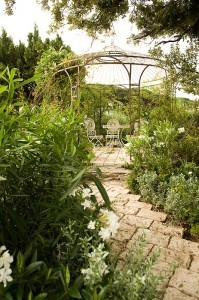 The gazebo in the grounds of my French home. I have spent wonderful evenings dreaming up my stories there.
The gazebo in the grounds of my French home. I have spent wonderful evenings dreaming up my stories there.


